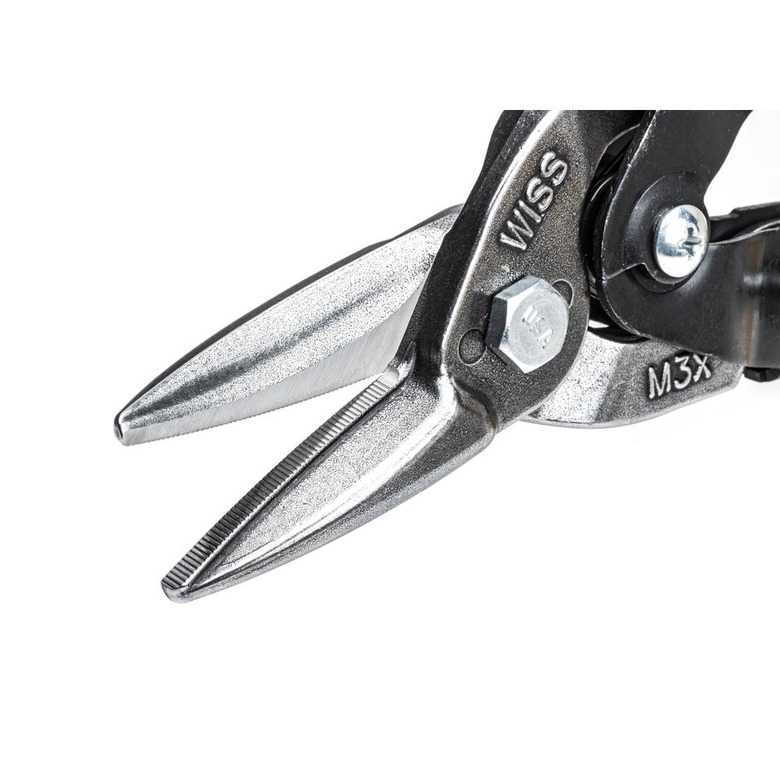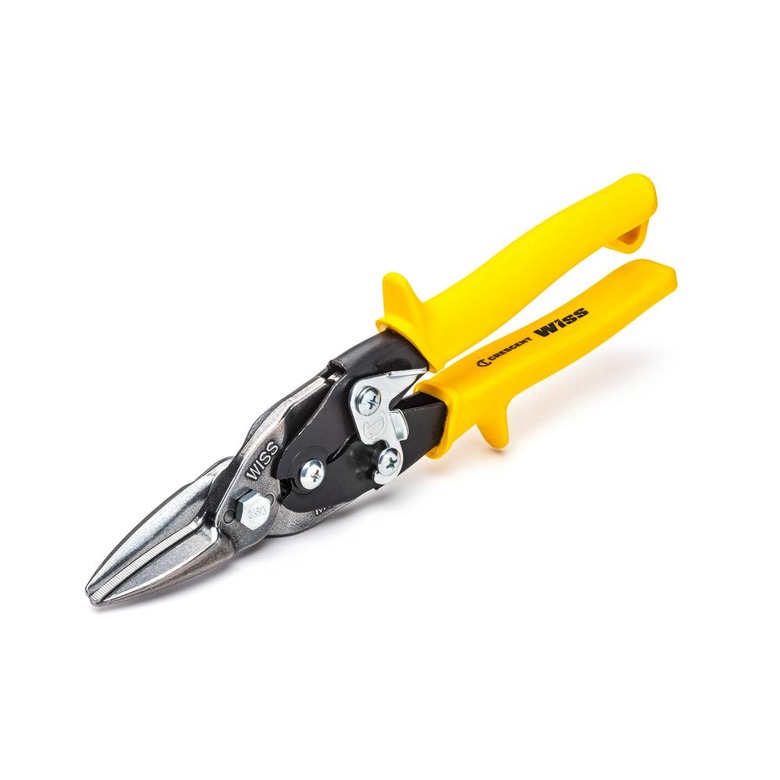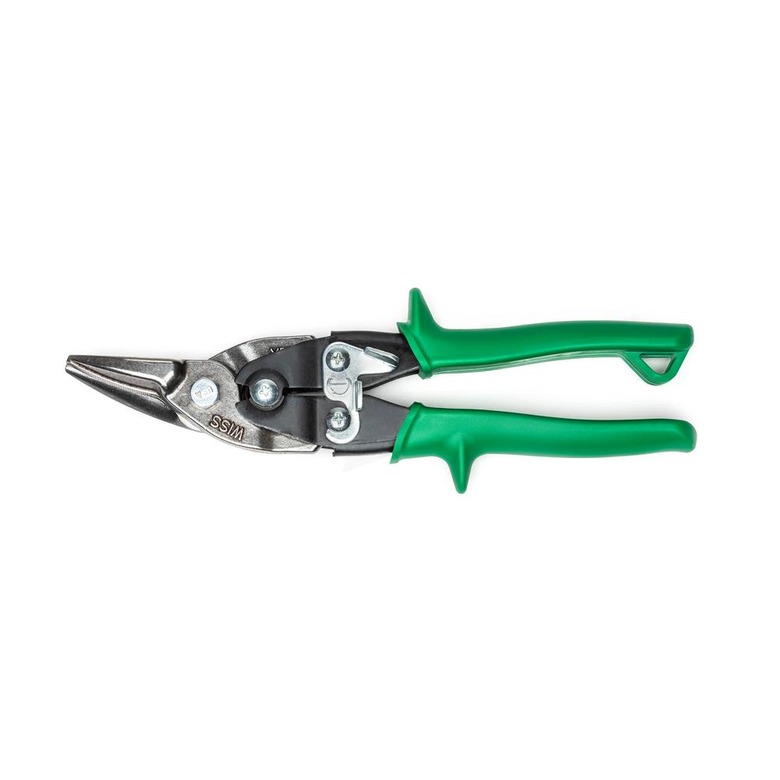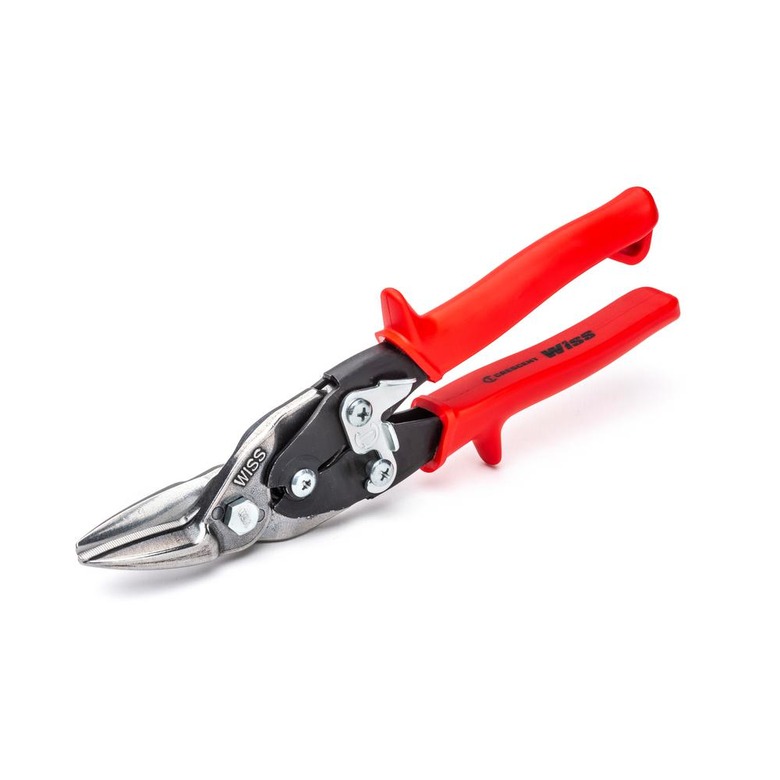How To Cut Sheet Metal
Standard sheet metal is thin, galvanized steel. It's the same material ducts are made of and is commonly sold in large, flat sheets in 18- to 28-gauge thicknesses. You can also find sheet metal in aluminum or even copper and brass, and they all can be cut using the same tools and techniques. You can make almost any cut in sheet metal with a single pair of snips. If you need really smooth cuts, or you have to make a lot of curved cuts, there are a few specialty versions of snips that will make the job easier and the cuts cleaner.
Tools for Cutting Sheet Metal
Tools for Cutting Sheet Metal
The most important tool for cutting sheet metal is a good pair of leather work gloves. If you don't wear them, you will cut yourself at one point or another, no matter how careful you are. The next thing you need is a good pair of compound tin snips, also called aviation snips. These are a more versatile version of the rusty, old-school tin snips you might have in your tool box. They have short, powerful jaws that can cut through 18-gauge sheet metal, as well as the seams on sheet-metal ducts. They are also handy to have around for cutting all sorts of other sheet materials—plastic, leather, rubber, etc.—so they're well worth the $10 or $12 for a decent pair.
Aviation snips come in a few different types. The standard, straight-cut versions have straight pointed jaws and a symmetrical geometry. They often have yellow handles and are designed for straight cuts but are more or less all-purpose, since they'll cut curves as well. If you need to make straight cuts and/or the occasional wide curved cut, you'll be fine with a pair of these.
Aviation snips also come in right-cut and left-cut versions. Right-cut are made for straight cuts and for making clockwise (right) curved cuts. They often have green handles and are ideal for right-handed users. They don't make counterclockwise (left) cuts very well. Left-cut snips are just the opposite: they make straight and counterclockwise cuts and are best for left-handed folks; they often have red handles. Right-cut and left-cut snips make their respective curve cuts more smoothly and easily than straight-cut snips, so they're worth buying if you have a lot of tight curves to cut. They also typically have an offset geometry that positions the handles above the cutting jaws for maneuverability.
One other tool you might consider buying if you have a lot of long straight cuts to make, particularly in relatively thin sheet metal, is a pair of standard tin snips, the kind that most resemble scissors and have large metal handles. If you have an old pair in your tool box, you can try those, or get a newer, sharper pair. These make cleaner, faster straight cuts than aviation snips, but they aren't as versatile.
Tips for Cutting Sheet Metal
Tips for Cutting Sheet Metal
Cutting sheet metal with snips is somewhat like cutting fabric with scissors; it's just a much tougher material, and it has deadly sharp edges and corners (don't forget those gloves). Sheet metal also often gets in the way of your snips as you get farther into your cut, making it hard to keep the snips straight or position your hand for efficient cutting. Minimize this problem by peeling or bending the waste material out of the way as you go, using the hand that's not cutting. Here are some more tips for different situations:
- Mark your cutting line with a permanent marker. A "fine point"
Sharpie is good for basic cuts, or you can use an "ultra fine point" for a more
precise line (which is also less visible afterward). - Open the snips' jaws all the way and align them with your
cutting line before making each cut. The jaws have the most cutting force at
the back, where the two halves cross. If a material is difficult to cut, open the
jaws all the way and force them into the material when making the cut; this prevent
the material from slipping out of the jaws. Align the jaws each time because it's
easy to deviate from your cutting line if you're not careful. - Don't close the jaws all the way, in most cases. Closing the
jaws tends to bend the metal at the very tips of the jaws (where they have the
least cutting power). Instead, stop cutting as you near the tips, then open the
jaws all the way again to advance for the next cut. - Start interior cutouts—such as holes that don't touch an
edge of the material—using a chisel or flat-blade screwdriver and a hammer.
Place the chisel edge or screwdriver tip inside the marked cutout, and tap it
with a hammer to pierce the metal and make a short gash. Work the jaw of your snips
into the gash to begin the cutout. - Cut small holes—up to about 2 inches in diameter—with a hole
saw and a portable drill. Mark the center of the hole on the metal, then clamp
the sheet down over a thick piece of scrap wood (such as a 2 x 4). Create a dimple
at the center mark by tapping it with a punch or a nail and a hammer; don't
break through the metal. Set the hole saw's drill bit onto the dimple and drill
out the hole, as when drilling wood, but use a slow drill speed to prevent
overheating the hole saw.




